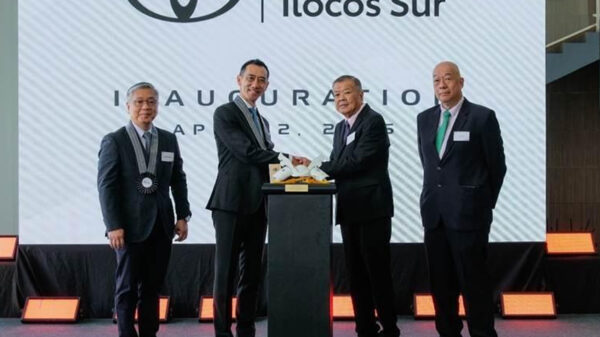EdgePoint Infrastructure (“EdgePoint”) – an ASEAN-based independent telecommunications infrastructure company, released a whitepaper that sheds light on the digital divide in South-East Asia (SEA). Titled “An Infrastructure-Based Approach to Advance Digital Equity in South-East Asia”, the whitepaper identifies connectivity challenges from an infrastructure provider’s perspective in three key economies, Malaysia, Indonesia, and the Philippines, and sets forth comprehensive policy changes to address those gaps.
Speaking at the whitepaper launch event, Suresh Sidhu, Chief Executive Officer and Founder of EdgePoint Infrastructure shared, “EdgePoint has unveiled these findings to catalyse meaningful conversations on digital equity in the mainstream. Robust and shareable telecommunications infrastructure is the foundation of expanding connectivity to underserved areas and ensuring seamless connectivity in highly dense areas. We need to drive digital inclusion as one regional community and make connectivity accessible for everyone in ASEAN, ensuring everyone is able to benefit from a digital world, technologically, economically and socially. As a trusted partner to mobile network operators (MNOs), telecom organisations and regulators, EdgePoint hopes this white paper is able to inspire industry stakeholders and policymakers to have these important conversations towards achieving universal connectivity.”
Suresh Sidhu, CEO and Founder of EdgePoint Infrastructure
Behind The Digital Divide
While connectivity has advanced tremendously in recent years, there are still parts of the region that have not benefited from access to connectivity. In Malaysia, 76% of the population are mobile users, but only 66% have access to mobile internet. 56% of Indonesia’s population have mobile devices, but only 47% are connected to the internet. Similarly in the Philippines, 54% are mobile device users, with only 42% with access to mobile internet. This shows that there is still a significant coverage gap and an urgent need to reach parts of these countries with no connectivity.
Findings from the whitepaper reveal disparities in the percentage of the population with no 4G coverage in several countries, including the Philippines (5%), Indonesia (5%), and Malaysia (3%). In addition, these countries have very high ratios of population per tower, well above developed market norms, indicating that there are also likely to be underserved populations as well.
Several factors contributing to poor connectivity generally are thin 4G coverage outside of major population centres, and the absence of end-to-end enabling infrastructure, such as backhaul. These issues ultimately lead to low levels of mobile internet adoption, hindering GDP growth.
Policy Reforms To Drive Digital Inclusivity
Through the findings, the whitepaper also outlines six main policy themes to bridge the digital gap in Malaysia, Indonesia and the Philippines,
1. Reform disbursement of funds for universal access initiatives to ensure the funds are more efficiently utilised and can rapidly benefit rural communities. Consider changing the fund disbursement model from a capital expenditure (CAPEX) disbursement to a monthly operational expenditure (OPEX) model, creating a sustainable and long-term approach to funding projects.
2. Conduct infrastructure mapping and improve access to information to help providers make strategic deployment decisions; for example – areas with low economic cases could require full government funding as they are not lucrative to the private sector.
3. Increase funding for backhaul infrastructure with shared access in rural areas, as it is a major contributor to coverage gaps across markets. Analysis should be conducted case-by-case to determine the most optimal backhaul approach, but can include microwave, satellite and even domestic submarine cables.
4. Create targeted programmes to improve coverage at essential facilities in rural and underserved areas such as hospitals, transport hubs, schools and markets – all essential public areas with higher footfalls to benefit disadvantaged users with limited/no internet access in their homes.
5. Mandate access for indoor ICT facilities to enable robust in-building coverage through legislation to allow telecoms licensees to install the necessary equipment. With improved in-building coverage, users can participate in varied digital activities such as work, financial transactions, and healthcare.
6. Build a quality standard for mobile coverage to serve as commitments for MNOs to deploy infrastructure to meet their targets, thereby stimulating infrastructure roll-out in underserved areas.
The whitepaper further outlines three additional policy recommendations which discuss the respective challenges in each market, including easing access to rights-of-way in Malaysia to expedite the process of building and deploying communications infrastructure, rationalising spectrum fees in Indonesia to increase investment in rural areas and addressing the lack of a universal service fund in the Philippines which creates a gap for telcos and other players to invest in marginal areas.
Suresh continued, “Introducing new approaches is key to ensuring no country is left behind in this fast-changing world. Adopting new ways of thinking and creating strong public-private partnerships will help accelerate change. At EdgePoint we will continue to focus on building quality digital infrastructure in the region so that digital equity advancement in SEA can be achieved and benefit the people.”
EdgePoint Infrastructure currently owns 14,500 towers across Malaysia, Indonesia and the Philippines.












































































































